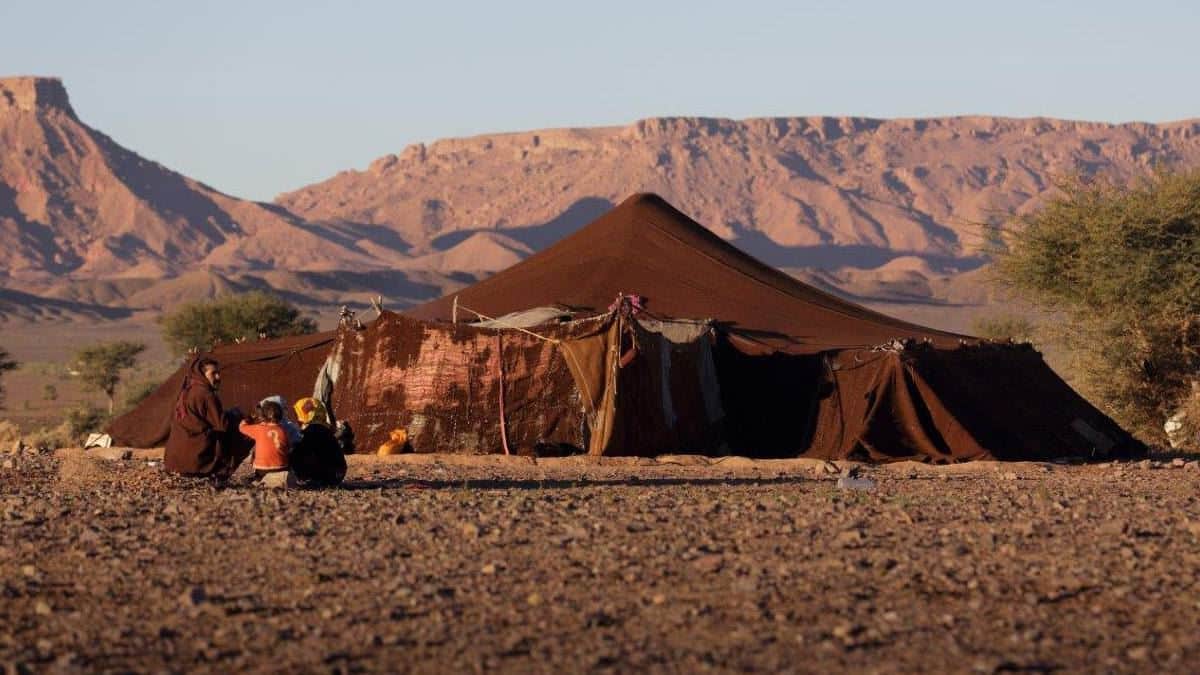[dropcap]T[/dropcap]he Nomadic lifestyle has always been present and widely spread among mountains in the southeast of Morocco, specifically a few miles away from Goulmima.
[ads1]
Most recently, it started to receive some attention from notable
sociologists and Anthropologists, mainly Ahmed Skounti, a great professor at the Institute national des sciences archéologiques et du Patrimoine (INSAP, Department of Anthropology, Rabat). Nomadism, as a social issue, must be observed and studied ethnographically, taking into account its historical development, to understand minority groups’ fascinating culture and lifestyle as well as the challenges they confront in their daily lives.
Nomads in the Ait Merghad tribe, one of the historical tribes in Ait Yafelman’s confederation, experience tough times due to the rugged geography of the region and the weather, which is always bitterly cold during winter, and unbearably hot during summer.
[ads1]
I got up early in the morning, grabbed a book, and walked for a long time towards a craggy mountain range overlooking Tadighoust, a small town in the province of Errachidia. I roamed joyfully despite the coldness of the morning breeze that touched my face, then I caught sight of a bunch of single-humped camels and two nomadic tents in the distance. The camels were skinny, apparently because of hunger as there was no grass nor any greenery to be seen in that arid Saharan land.
I curiously walked straight up to those tents, and I found a middle-aged man in traditional outfits; he was making his morning tea on coals. Surprisingly, he was very welcoming, I spent some time with him, and engaged in a conversation in which I was free to inquire about his lifestyle as a migratory nomad, and inquire about the lives of other nomads on the range.
[ads1]
Having talked for a while, I concluded that most nomads living in the area are pleased by the daily chores that they tirelessly do because they have been passed down to them from past generations. As far as I am aware, they repeatedly get up early at the crack of dawn, feed cattle, and set out herding all day till dusk, as well as travel around with their families without a stable place to settle down.
Nevertheless, a novel phenomenon has started to take place in recent years; it is referred to in Anthropological terms as “Sedentarism”, and it is the complete transition from a nomadic lifestyle to a lifestyle that involves settling down or remaining in one place permanently. Several reasons contributed to giving up on a traditional nomadic lifestyle. Firstly, and mainly, harsh living conditions, most cattle grazers suffer substantially in mountain ranges, arid lands, and valleys, and they want to better their lives by seeking stability like the rest of the people. Therefore, most of the new houses that had been put up for sale, at least in these neighboring towns, were purchased mostly by nomads, which demonstrates their mutual desire to settle down permanently.
[ads1]
Second, not only do they go through tough times in mountains and the middle of nowhere, but they are also worried about their pastoral production that is gradually shrinking, leaving them at risk of extreme poverty. According to the nomad with whom I talked, he says he is not making any profits when he sells sheep and camels, principally because of the consequences of the novel COVID-19 and the drought in the region.
Finally, the education of their children has also become indispensable due, in part, to modernization and constant advocation for schooling as a primary human right. As a result, roaming nomads must create a stable life for themselves, at least, to decently raise their children and provide them with proper education like the rest of the children at their age.
All in all, Moroccan Berber nomads are interesting, so is their simple and traditional culture; however, it is sad to see that such simplicity started to disappear.

